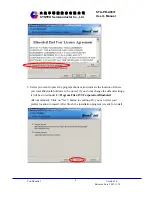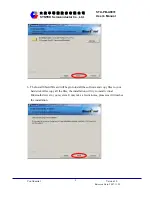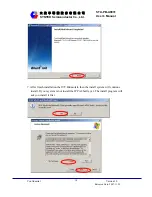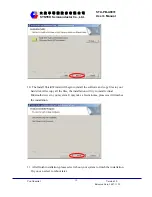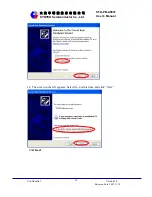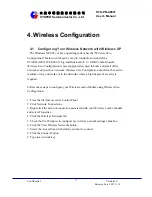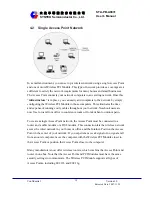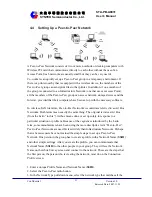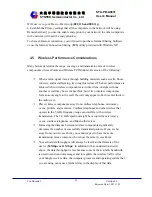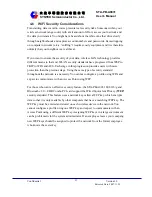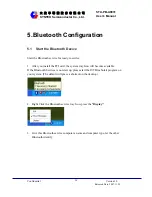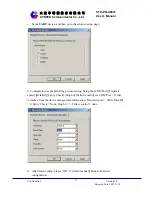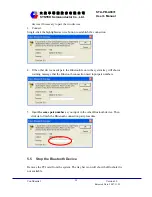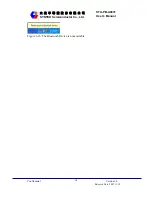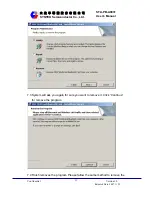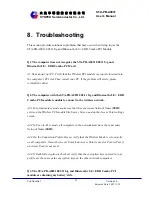
Confidential
Version1.0
Released
Date:
2007.11.22
22
太
欣
半
導
體
股
份
有
限
公
司
SYNTEK Semiconductor Co., Ltd.
STA-PB-A0031
User’s Manual
WiFi device in your Peer-to-Peer Group (
802.11b and 802.11g
).
4. Establish the Privacy settings that all the computers in the network will be using.
Remember that if you need to enable encryption in your network, the other computers
in the network will need the encryption key.
To share an Internet connection, you will need to purchase Internet Sharing Software
or use the Internet Connection Sharing (
ICS
) utility provided with Windows XP.
4.5 Wireless Performance Considerations
Many factors determine the range, coverage, and transmission rate of wireless
components (Access Points and Wireless PCI Module). Be aware of the following:
When a radio signal travels through building materials such as walls, floors,
concrete, and metal framing, its strength is reduced. The best performance is
achieved when wireless components are in direct line-of-sight with one
another. A wall may be six inches thick, but if two wireless components
form an acute angle to the wall, the wall may appear to be three feet thick to
the radio wave.
Place wireless components away from cordless telephones, microwave
ovens, printers, and monitors. Cordless telephones and other devices that
operate in the 5 GHz frequency range can interfere with wireless
transmission. The 2.4 GHz spectrum might be occupied by microwave
ovens, cordless telephones, and Bluetooth devices.
Increasing the distance between wireless components significantly
decreases the number of successfully transmitted packets. If you are far
away from your Access Point, you cannot expect to have the same
transmission rate as someone who is near the same Access Point.
Your actual data throughput will always be less than the data rate of the
device (
54 Mbps or 11 Mbps
). In addition to the considerations listed
above, the data throughput is less because some of the available bandwidth
is used to send control messages and to regulate the wireless traffic. After
your dongle receives data, the computer processor and operating system that
you are using can cause a further delay in the display of that data.

